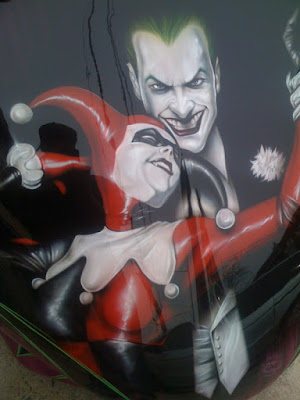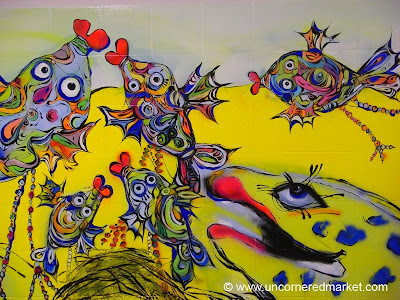The many maritime Maltese ship graffiti on prehistoric temples and catacombs provide significant iconographic evidence for maritime activity in and around Malta. These graffiti may also be considered as early evidence highlighting the link between seafarers and the divine. The Tarxien ship graffiti are among the oldest in the Mediterranean and date back to approximately 1600 BC. They show that Malta was visited by various people of the sea who probably originated from the Eastern Mediterranean. Later ship graffiti were also found in large numbers on the walls of small churches and wayside chapels datable to the late middle ages and early modern period. Ex-voto paintings found in chapels and churches around Malta and Gozo also provide visual information on mercantile vessels as well as an insight into the perils found at sea. Many vessels and crew members were lost at sea during tempests or during skirmishes with the corsairs. These paintings and graffiti must have been done by seafarers to implore God’s protection before embarking on a voyage which would at times last even over a year, and also to thank Him on their return.

A plaque of gypsum portraying a ship
graffiti engraved on the walls of the Church of Visitation at Wied Qirda in Haz-Zebbug, Malta Maritime Museum Archives
Since time immemorial man has had to struggle with nature to survive and better his way of life. The need for water transportation for the islands of Malta, with its great natural harbours, situated in the middle of the Mediterranean sea, brought about the invention and evolution of boats and ships. The local inhabitants for centuries, depended on seafarers to import food supplies, animals, construction material, tools and other material goods.
The evolution of shipping in Maltese history depended on various factors, corresponding to various economical and social requirements. Changing patterns in trade and advancements in technology influenced the design of ships. Malta lacked trees for ship and boat building material, and when shipbuilding was established on the island it was procured from nearby countries. Timber costs affected the building of boats and local boat builders along the years developed a method of utilising thin timber in order to lower costs. This paved way to unique building techniques which Maltese craftsmen perfected in their own style throughout the centuries. Such practices contrasted with other boat building methods applied in for example the nearby islands of Sicily or Greece were boat builders applied stronger Graffiti

Local Tartana
Various colonisers were attracted by the islands natural harbours. The Phoenicians set up a post in Malta in 800 B.C., possibly influencing extant local boat building traditions. During the Roman period which started in 218 BC, the local inhabitants were exposed to numerous ships of various sizes, including large cargo ships built to carry grain from Alexandria to Rome. In the Acts of the Apostles, it is known that the vessel on which St.Paul was travelling on before he was shipwrecked on the Maltese Islands was a merchants vessel carrying grain from Alexandria. The Byzantines, who were master ship builders of the Eastern Mediterranean also occupied Malta and must have also influenced contemporary local inhabitants. The Arabs, who occupied Malta in 870 AD, developed their fast lateen rigged ships to a high degree of perfection and their techniques were probably assimilated by Maltese ship builders as they were elsewhere in the Mediterranean. The late medieval period in Malta saw the arrival of the Normans and later the Spanish. It was a period when Malta had its first documented arsenal situated near Birgu and Western Mediterranean ship building techniques were probably fused with Eastern ones. The strategic position of Malta and the Grand harbour made it a favourite amongst well known corsairs from the western Mediterranean and Birgu with Fort St. Angelo at the head of the peninsula was to become the first
Maritime City of the
Island.
During the rule of the Order of St. John from 1530- 1798 the construction of Maltese ships played an important part in the economic life of the island and the civil arsenal located behind Senglea catered especially for the construction of merchant ships. There were many types of merchant ships found in the Grand Harbour area but the most popular vessels used by Maltese merchants were the Xprunara, the Brigantine, and the Tartana family of vessels and to a lesser extent the Pollacca.
There were various other vessels used by the Order of St. John and later adopted and also built by Maltese Merchants such as the Chebek and the Pinco, which were introduced in the Mediterranean by the Barbary corsairs, however they were not as popular with the Maltese Merchants as the other vessels.
Between 1798 and 1800 Malta was occupied by Napoleon and his French troops. The upheavals of the French Revolution and the Napoleonic Wars had necessitated drastic changes in the technologies of shipbuilding. The great displacements of men, munitions, and provisions of war from one part of the Mediterranean to another required swifter vessels with greater hull capacities than those of the Ancien Regime.
After Malta passed under British rule in 1800, mercantile activities highly increased. Cargo ships were acquired for a time from foreign sources but by 1820 Maltese merchant ship builders were again launching fine ships of their own. The variety and number of boats increased and eventually the latest technology from Britain was also being assimilated. In a short time the Mediterranean witnessed the disappearance of several small lateen-rigged vessels like the brigantine, the fregata, the felucca, the pinco, the pollacca, and the chebec which were replaced by the stronger square-rigged ships such as brigs, barks, bombards, and
schooners. .
Following is a description of the most popular mercantile vessels used by the Maltese, mainly during the rule of the islands by the Order of the Knights of St. John: the Xprunara, Brigantine, Tartana family of vessels and the Pollacca, accompanied by images.
These Maltese mercantile vessels were chosen from the rest as they are considered to have had the most local
characteristics.





















































